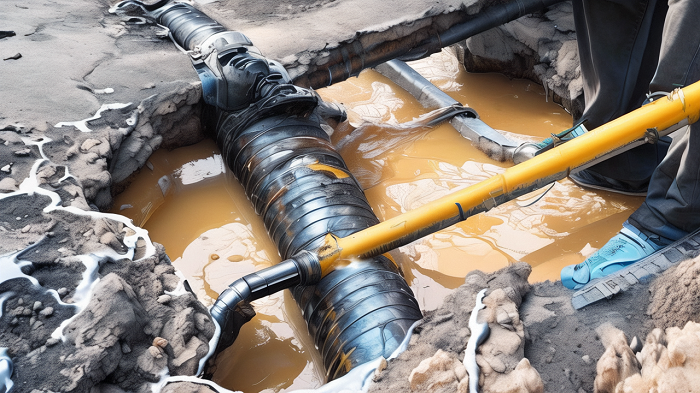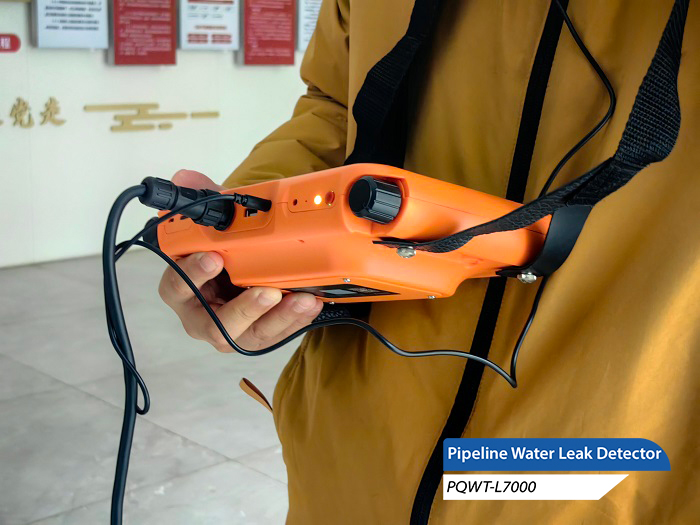In today's accelerating urbanization process, underground pipeline network as an important part of the city's "lifeline", its safe and stable operation is directly related to the normal operation of the city and the quality of life of residents. However, water leakage of pipeline network has always been a big problem for city managers and residents. Leakage not only leads to the waste of water resources, but also may lead to ground subsidence, building damage and other safety issues, bringing considerable economic losses and security risks to the city. Therefore, it is of great significance to analyze the causes of pipe network leakage and adopt effective coping strategies to ensure the safe operation of urban pipe network.

1. Pipe and fittings quality problems
One of the main reasons for the leakage of underground pipe network is that the quality of pipes and fittings is not up to standard. Some projects in the selection of materials failed to strictly control, the use of quality does not meet the requirements of the material, these materials in the process of prolonged use is prone to aging, cracking and other problems, which in turn triggered the leakage.
2. Joint welding quality problems
Pipe joints are key parts of the pipe network, and their welding quality directly affects the sealing of the pipe network. If the welding process is not appropriate or the welding quality is not up to standard, the joints are prone to cracks or leakage, resulting in water leakage of the entire pipe network system.
3. Pipeline anti-corrosion and poor insulation
Anti-corrosion and heat preservation measures are crucial for the safe operation of pipelines. If the pipeline corrosion layer is damaged or the insulation material is aging, the pipeline is easily affected by the erosion of the external environment and temperature changes, thus water leakage occurs.
4. Other engineering construction impact
In urban construction, the construction of other engineering projects may cause damage to the pipe network. For example, excavation, backfilling and other operations may damage the pipes and lead to water leakage.
5. Excessive water pressure and water hammer damage
Excessive water pressure or water hammer phenomenon in the pipe network system may cause damage to the pipes. Excessive water pressure can cause the pipe to be subjected to excessive pressure, while the phenomenon of water hammer can generate shock waves inside the pipe, causing damage to the pipe.
6. Traffic load and soil settlement
In areas with heavy traffic, underground pipes may be compressed by heavy loads such as vehicles, leading to deformation or rupture of the pipes. At the same time, soil settlement may also subject the pipe to uneven stress, triggering water leakage.
7. Water quality and internal corrosion of pipes
In areas with poor water quality, the water may contain corrosive substances, which will cause corrosion on the inner wall of the pipeline, reducing the pressure-bearing capacity of the pipeline and increasing the risk of water leakage.
8. Pipeline service life exceeds the expiration date
With the growth of pipeline service life, the pipeline material will gradually aging, pressure capacity decline. Over-service pipes are more likely to leak, and need to be replaced or repaired in a timely manner.
Countermeasures

For the above reasons, we need to take a series of countermeasures to prevent and solve the pipeline leakage problem. We can use pipeline leak detector to find out the leakage point. The working principle of pipeline leak detector is that after the leakage of pressurized water pipe, when the pressurized water rushes out from the broken mouth of the pipeline, the sound vibration produced by friction with the pipe wall and other additional vibration caused by it are transmitted to the pipeline above the ground surface, and the instrument is used to detect the leakage on the road surface to find out the leakage point.
Generally speaking, the basic detection method is to connect the pipeline leak detector host, headphones, sensors. Turn on the switch, wear a good headset, in the pipeline above the road surface to place the sensor, according to the pace of the length of the step-by-step placement, step by step listening, the closer the leak, the stronger the signal, the farther away from the leak, the weaker the signal, through the comparison of the signal strength between different points to achieve the purpose of detecting leaks. Therefore, when we use pipeline leak detector, it is meaningless to listen to the leakage signal at one point, we should compare it with many points repeatedly, and compare the place where the sound vibration is bigger is the leakage point.
Pipeline leakage is the result of many factors. By strengthening the quality control, improve the welding quality, strengthen the anti-corrosion and thermal insulation measures, to avoid the impact of other engineering construction, reasonable control of water pressure, strengthen the maintenance and overhaul as well as timely replacement of overdue service pipeline and other measures, we can effectively prevent and solve the problem of leakage of the pipe network, to ensure that the safe and stable operation of the urban pipe network.








